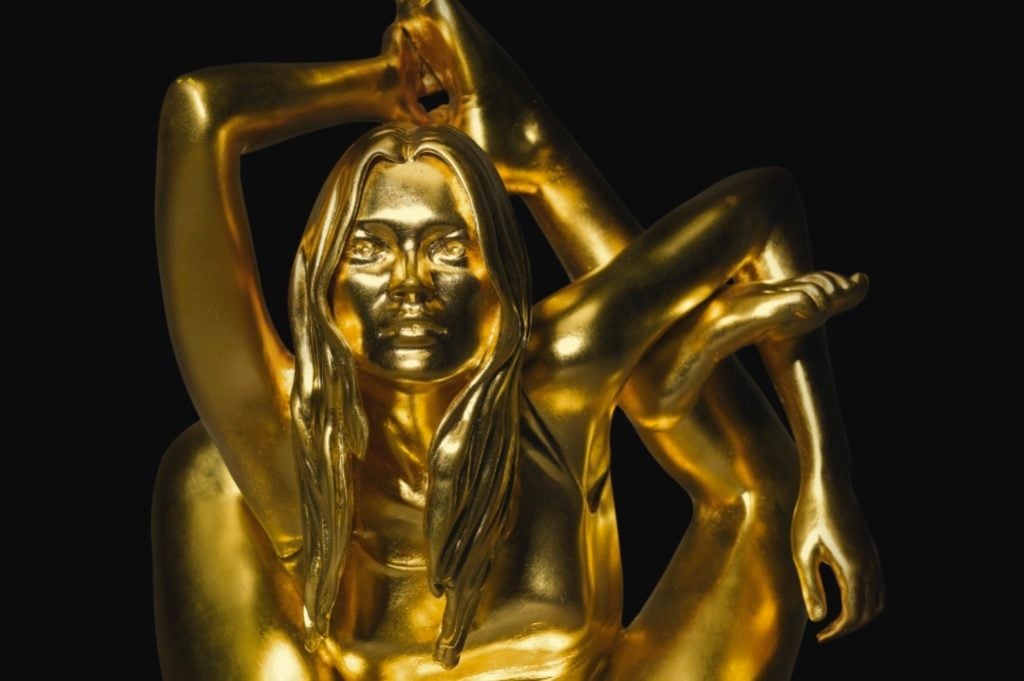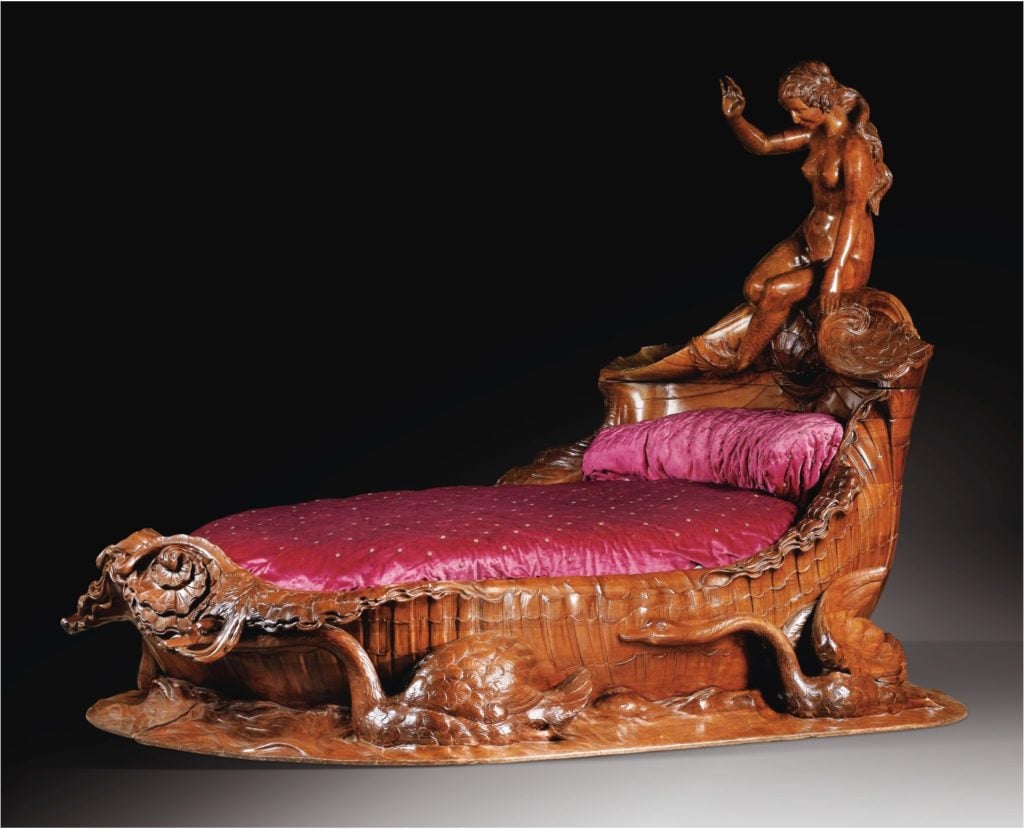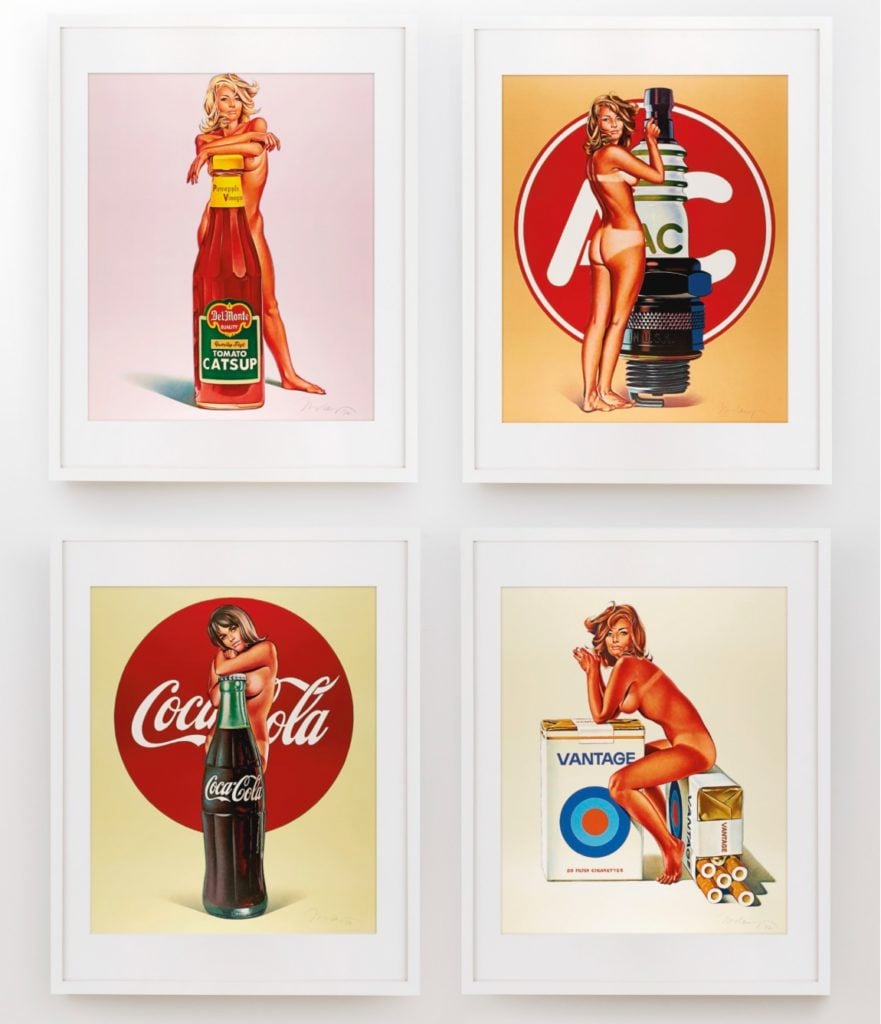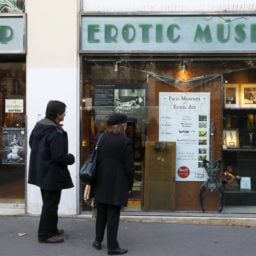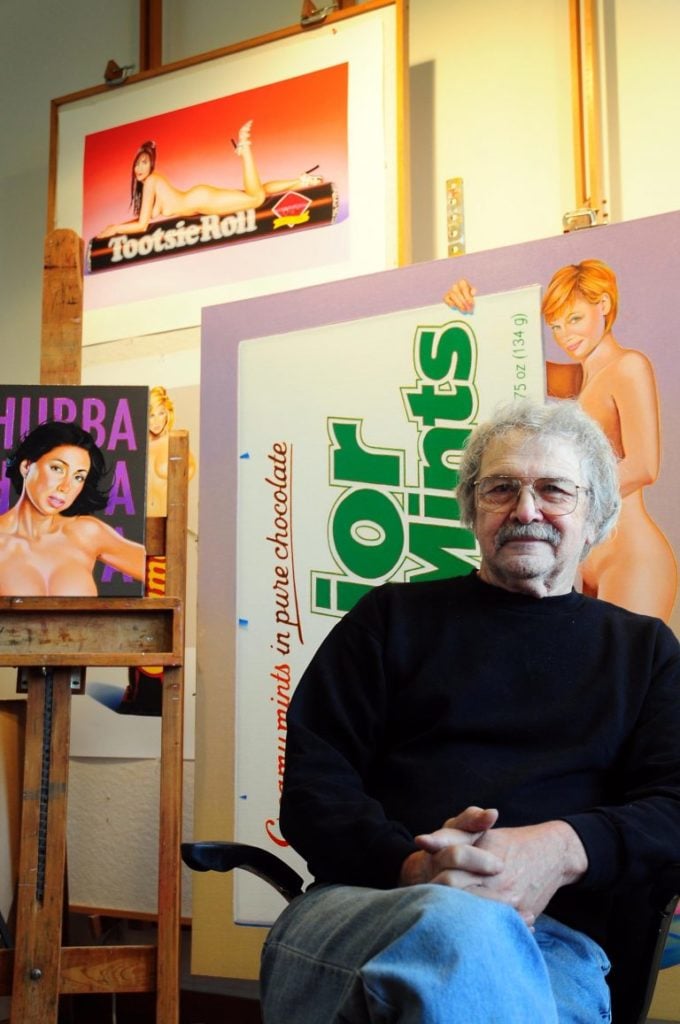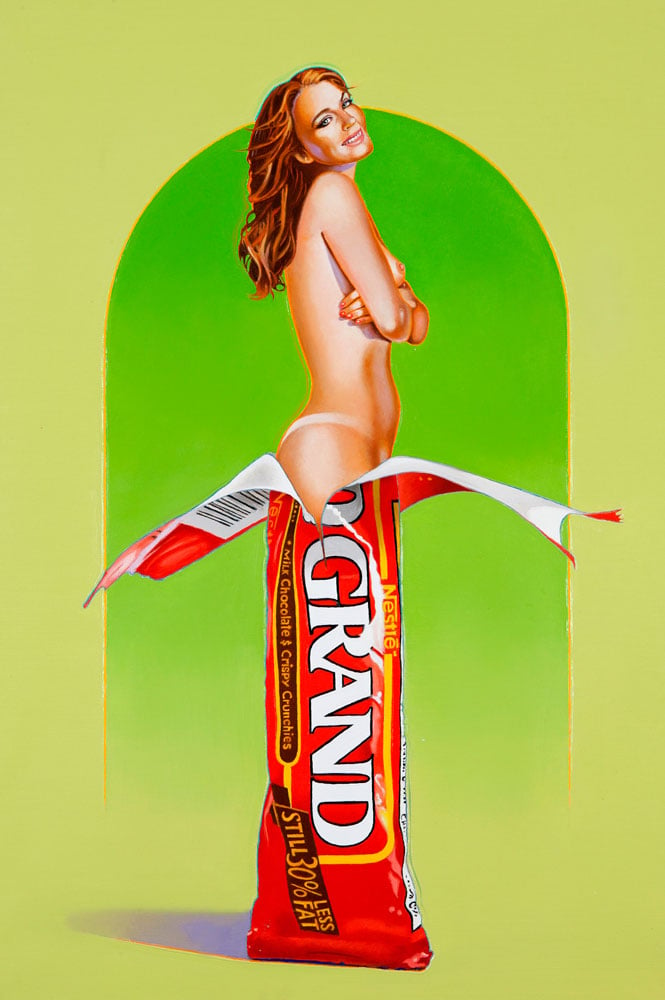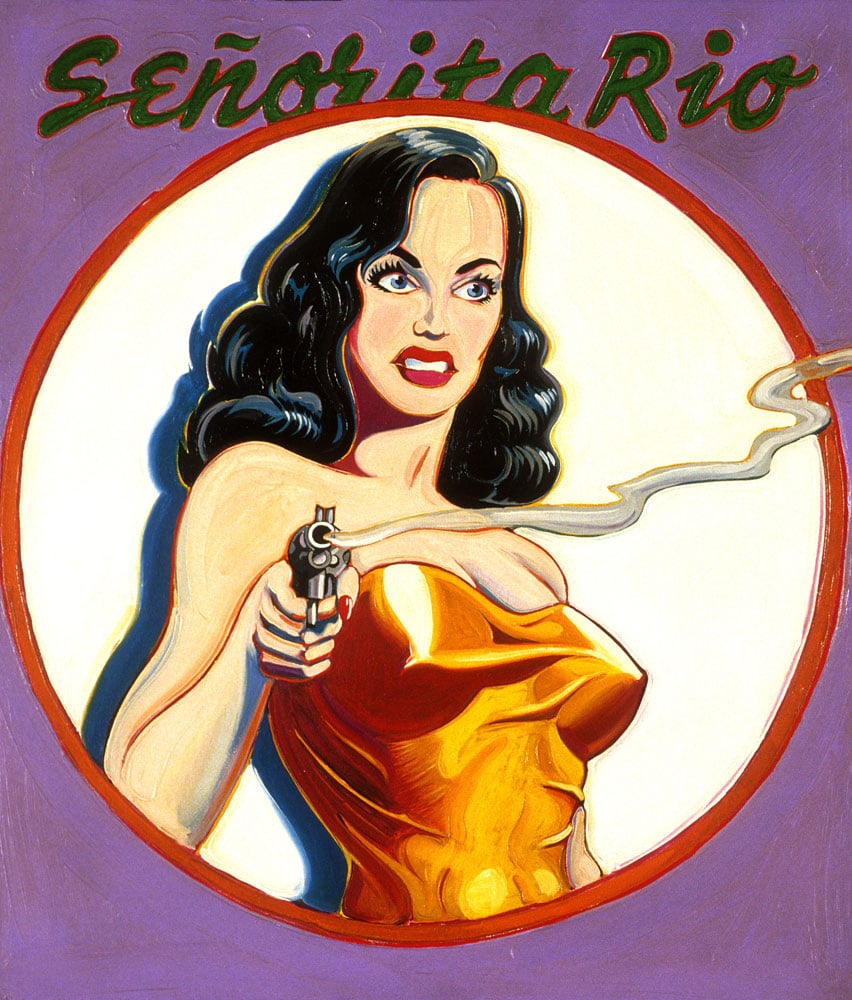
Opinion
Here’s What Really Happened With Banksy’s Art-Shredding Stunt at Sotheby’s, According to Kenny Schachter’s Source
What did Sotheby's know about the headline-grabbing stunt, if anything? Our columnist has a few notions.
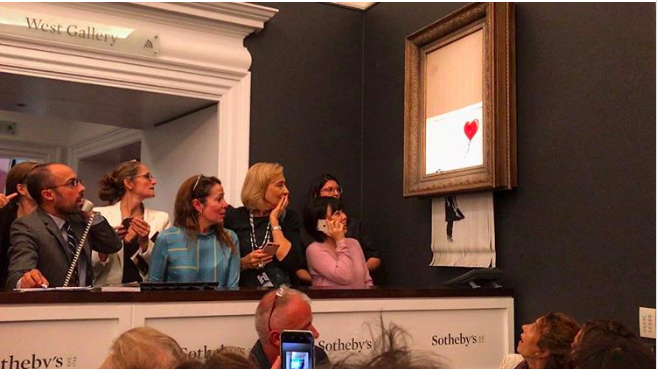
After last week’s welter of breathless reportage surrounding Banksy’s surprise pantsing of the art market at Sotheby’s London, I had made it a pre-New Year’s resolution never to mention the painting-shredding stunt again. Until, that is, I got a call from my trusty inside source Deep Pockets, who summoned me to meet him at a bar directly from Heathrow, where I was returning from an artist’s talk I’d given the night before in Cologne. (My source never divulges over the phone.) The scoop? He told me the definitive Banksy story, in its entirety.
First of all, if the entire prank—with a crude device concealed within the artwork’s ridiculously oversize frame half-slicing-and-dicing the painting onstage as astounded auction specialists looked on—sounds like a giant PR stunt, know that the consigned artwork was inscribed “Thanks, Jo” (with a heart), and Banksy’s PR representative happens to be named Jo Brooks.
I’m told that someone from Banksy’s publicity team contacted Sotheby’s to sell the painting Girl With a Balloon, but that the consignment came with stipulations, more or less as follows: a. the painting had to be hung in the salesroom during the sale; b. it needed to be sold in the latter half of the proceedings; and, c. it wasn’t to be examined out of the frame. As it’s not the norm to hang a relatively inconsequentially valued painting in the room (the pre-sale estimate was £200,000 to £300,000) during an evening auction, the house replied no.
The consignor countered by offering to pay a seller’s fee of around 5 percent. (That this person wasn’t automatically charged to place the work in the auction indicates that this was not a new relationship, and I’m told this PR liaison acts as a regular, go-to conduit for Banksy to feed art into the auction stream). The response from Sotheby’s came back again in the negative, at which point the consignor raised the ante to around 10 percent, and Sotheby’s acceded—the deal was done. The auction house certainly suspected something was afoot, by the very nature of the dialogue leading up to the sale, but I can assure you that is all they knew.
Like it or not, what followed—a mild protest prank mocking the moneyed, who get to laugh back and make more—is now canonized, one for the books.
Speaking of books, if the auction house did know that there was something in the works and didn’t tell prospective buyers, I thumbed through Elizabeth II’s Fraud Act of 2006, Chapter 35, to confirm that such an act of hanky-panky might very well qualify for “fraud by failing to disclose information.” But because the buyer—a “female European collector” and “long-standing client,” according to Sotheby’s—agreed to purchase the newly “reborn” artwork, now renamed Love Is in the Bin, there are no victims, save the readers who must be exposed to incessant coverage of the whole charade (which was, yes, undeniably funny and flawlessly executed).
When asked about Deep Pockets’s narrative of the event, Sotheby’s denied everything, with a representative saying that “how the work was handled and presented in the sale/on the night never featured in our discussions regarding commission rates, and there were no stipulations re the frame connected to our consignment agreement.” As for how the frame’s internal weaponry slipped under the auction house’s radar, Sotheby’s said the following:
When we asked the artist’s studio about removing the work from its frame during the cataloguing process, we were expressly told not to. We were told that the frame (which was glued) was integral to the work; breaking it would damage the work, and negatively impact its artistic value. This is not unusual—consider Lucio Fontana’s lacquer frames, or George Condo’s frames that include labels on the back saying do not remove from frame. If you remove the frame you violate the artist’s wishes and destroy the artwork. Our catalogue entry for the work describes that the work as is an ‘artist’s frame’. The certificate we received from the artist’s studio stated that the frame was “integral to the piece.”
As for Jo Brooks, asked whether she had any involvement in the stunt, she replied the narrative was “factually inaccurate.”
In a realm as chockablock with legerdemain as the art world, what matters, at the end of the day, is the the audience enjoyed the show. With his star turn at Sotheby’s, Banksy gave us all a command performance.
Kenny Schachter is a collector, dealer, curator, artist, and, yes, columnist for artnet News. His opinions are his own. Read Kenny’s other columns here.
Follow artnet News on Facebook:
Want to stay ahead of the art world? Subscribe to our newsletter to get the breaking news, eye-opening interviews, and incisive critical takes that drive the conversation forward.
SHARE
Article topics

